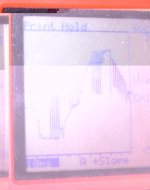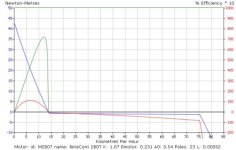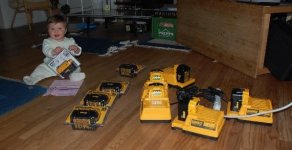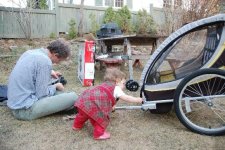In the **Important** reality check on motor, voltage, current etc. thread LFP/Luke, Rhite05/Eric and others are doing an excellent EE-based description of the power conversion in a switched regulator.
http://endless-sphere.com/forums/viewtopic.php?f=2&t=19590&start=0
A bit of a different and more overall take on this topic is to look at overall power instead of the details of the PWM switched voltage and currents. After all what burns things is heat and heat comes from dissipated power. An overall look at wasted power is surprisingly easy to obtain from the ebikes.ca simulator. Just turn the graph upside down, and adjust the power scale for the motor efficiency. See example below for my 9C and 20A analog controller:
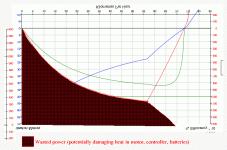
Conclusion is essentially the same as in the realitycheck thread: there is a large wasted power in the low and medium speed ranges where the cpontroller is PWM switching the voltage down and current up and therefore the Ri of the motor is a dominant source of waste heat (with lesser/insignificant contributions from battery and controller also included in the graph).
http://endless-sphere.com/forums/viewtopic.php?f=2&t=19590&start=0
A bit of a different and more overall take on this topic is to look at overall power instead of the details of the PWM switched voltage and currents. After all what burns things is heat and heat comes from dissipated power. An overall look at wasted power is surprisingly easy to obtain from the ebikes.ca simulator. Just turn the graph upside down, and adjust the power scale for the motor efficiency. See example below for my 9C and 20A analog controller:

Conclusion is essentially the same as in the realitycheck thread: there is a large wasted power in the low and medium speed ranges where the cpontroller is PWM switching the voltage down and current up and therefore the Ri of the motor is a dominant source of waste heat (with lesser/insignificant contributions from battery and controller also included in the graph).


